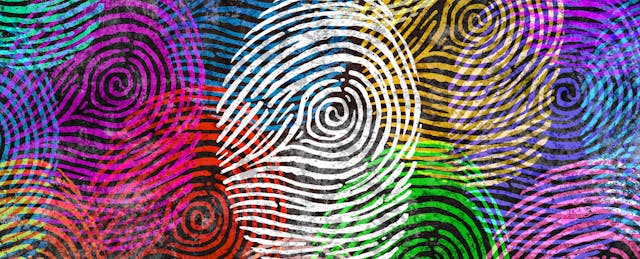Why do white men clam up when conversations steer toward race? Why are white women prone to crying when discussing this topic (and how can those tears silence women of color)? Why do some leaders feel uncomfortable and reluctant to get feedback on how their actions and behaviors are perceived?
If these sound like familiar reactions—or how you respond yourself—to conversations around race, you’re not alone.
There’s a term for this type of defensive reaction, and it’s called white fragility.
Inherent biases are discomforting and problematic, but it shouldn’t be a problem to acknowledge and address they exist. White fragility shapes American culture and society—in ways both obvious and unconscious. As a white woman, former teacher in a predominantly black community, education writer, and diversity manager at Google, white privilege and fragility shapes the words I say and write, the actions I take, the responses I give. So, when I think about how to address those biases and how to actively understand them—and more importantly, challenge them—what do I do?
Talk to Dr. Robin DiAngelo, the very woman who coined the term “white fragility,” and you may start to get some ideas.
DiAngelo is Affiliate Faculty of Education at the University of Washington, a writer and speaker on racial justice. A white woman herself, DiAngelo has published widely and just released her third book, “White Fragility: Why It’s So Hard for White People to Talk About Racism,” which debuted on the New York Times Bestseller List.
Last week, DiAngelo and I sat down to discuss how these ideas shape relationships between teachers, children and parents in K-12 and higher-education communities, particularly in diverse areas that are served predominantly by white educators and education leaders.
Mary Jo Madda: So first off, we are both white females. To begin, can you give us a basic definition of what white fragility is?
Robin DiAngelo: White fragility is the defensive reaction that so many white people have when their positions or perspectives around race are questioned.
Most recently, you were a professor. How did you see white fragility manifest in the higher-education environment? What about in K-12?
I was a professor of education. I taught both elementary and secondary education. So, let’s start with K-12 teachers.
K-12, and especially K-6 teaching is a primarily white female population, and a lot of those white teachers are motivated by their love of children. And they’re very attached to a “colorblind” approach—that idea of “I’ll look at every child as a unique individual and love them and everything will be OK.”

At the same time, there are deep, implicit biases. Most white teachers grow up in segregated environments and have only ever had white teachers themselves. They went to all-white schools, in white neighborhoods. So, they have been left to rely on deeply problematic sources for their understanding of people of color.
We can see the result of that implicit bias—it doesn’t have to be intentional, but think about it…the grade where the greatest number of suspensions of black and brown children occur is preschool. Research shows that many of those white teachers begin teaching already fearing black and brown boys. This is not likely a conscious fear, but segregation has left them to rely on limited and frightening representations.
And in higher education?
Many professors of education are those white teachers who have grown up and gone on to graduate school. And unfortunately, you can get through a graduate program in education in this country without ever discussing racism.
If you are in a progressive teacher-education program, you may have one required course. But that doesn’t mean you’ll be discussing racism in the course. You may just be discussing how to introduce ethnic authors in February and celebrate holidays (what we call “Tacos on Tuesday”). At the same time that we are not addressing structural racism, our schools are one of the most effective mechanisms for sorting children into unequal places in society. Our schools are not equal, and we all know that or we wouldn’t care what schools our children went to. But oh do we care!
It takes strategic, intentional and courageous action to interrupt these systems, and student-teachers are not prepared to do that. Most of them operate from a colorblind approach. But then there’s also this “white progressive” narrative.
I’m curious about this white progressive narrative, which is something I hear a lot about and, truthfully, have subscribed to myself. Take when white folks claim to support minority groups, but still become defensive when race relations come into conversation. What impact have you seen this take on students?
Well, what ends up happening is that students of color are struggling, and they blame themselves because everyone else is blaming them. There’s no space for them to bring their experiences or concerns to the teacher because the teacher cannot hold that conversation.
I sincerely do not believe that any individual teacher would want to do harm to children. But defensiveness about the harm we are doing prevents us from not doing it. Racial disparity in education is real. We have to be willing to examine what part we play in these consistent patterns of inequity.
If I may say so, a lot of teachers are a bit of know-it-alls. We profess to value lifelong learning, but many of us are not lifelong learners.
That idea of “I’m the teacher and I always have the right answer?”
Yes.
Many teachers don’t have a framework for understanding the marginalization of many of their students. So they blame the families and take umbrage at the suggestion that they play a part. They hear that as suggesting that they have intentionally sought to be mean.
For example, a parent of color might approach them with their concerns, “I think you are treating my child unfairly because of their race.” It is highly likely that the teacher will take umbrage to that—“How dare you think that I would discriminate against your child!” Yet by every measure, schools do treat children of color unequally. White teachers need to understand that those parents are delivering their precious children into an institution that has not done right by them.
There is a deep history of harm between children of color and public education, and it’s absolutely rational that parents of color should feel concerned and bring those concerns to white teachers. Rather than be offended, white teachers have to take parents of color seriously and earn their trust.
There’s this other piece which you’ve spoken about—the credentialing concept. When I was a young teacher in a predominantly black community, I definitely mentioned my “credentials” in conversations, to build myself up or engender favor. What do we need to understand about this?
I’ve been in enough conversations with people of color to say that credentialing isn’t helpful. They’re probably rolling their eyes. It’s not meaningful to them that you taught in a primarily black school, because most white teachers that are doing terrible harm to their children teach in primarily black schools. I use the analogy of being married to a man, and gender relations. He loves me, but the moment he fell in love with me, his sexism did not vanish. And it comes out at times, and we struggle with it.
We’re having this interview in the Silicon Valley, and the edtech world is no different from education when it comes to diversity. Look at who runs the largest edtech venture capital or philanthropic firms, and then who ultimately gets funded. How do you see some of what you’ve researched playing out in the education technology space?
Well, this isn’t the area that I’ve focused on, per se. But let’s look at STEM, for a moment.
Elementary school teachers are overwhelmingly white females and have experienced gender bias in education. I taught in a large teacher-ed program that was overwhelmingly white and female, and math was a huge struggle for many of them. If you’re in public schools, and you have teachers who themselves struggled with STEM subjects or suffered that lack of confidence—coupled with implicit bias—you can see how that lack of STEM preparedness is going to be reinforced. Then, you add the differences in funding in programs, and all of that adds to that structural outcome of overwhelmingly fewer women and people of color in the tech world.
I imagine that there may be people out there reading this article and thinking in the back of their mind that this feels like “reverse racism”—or being “racist” against white people. What would you say to them?
When you open up conversations around diversity with white people, in my experience, there’s that immediate fear of being branded as a racist. Well, let’s just start off with this—I do think you’re a racist. And I think that I am, too. Let’s just start from that premise, that all white people have inherently racist perspectives based on being socialized in a society in which racism is the bedrock, and then let’s just get to work trying to figure out how it manifests, rather than if.
Reverse racism is just not possible when you understand that racism is a system of unequal institutional power. It transforms how you understand what it means to say, “I am racist and I think you’re racist too.” Everyone has racial bias, but when you back your group’s collective bias with legal authority and institutional control, when your group is sitting at the tables making decisions that affect the lives of those not sitting at the tables… your racial bias becomes a far-reaching system that does not depend on your conscious intent. It becomes the default.
Let me be clear. I am not saying you and I are bad. I am saying that we are a product of our culture. But because it is learned, it can be unlearned.


